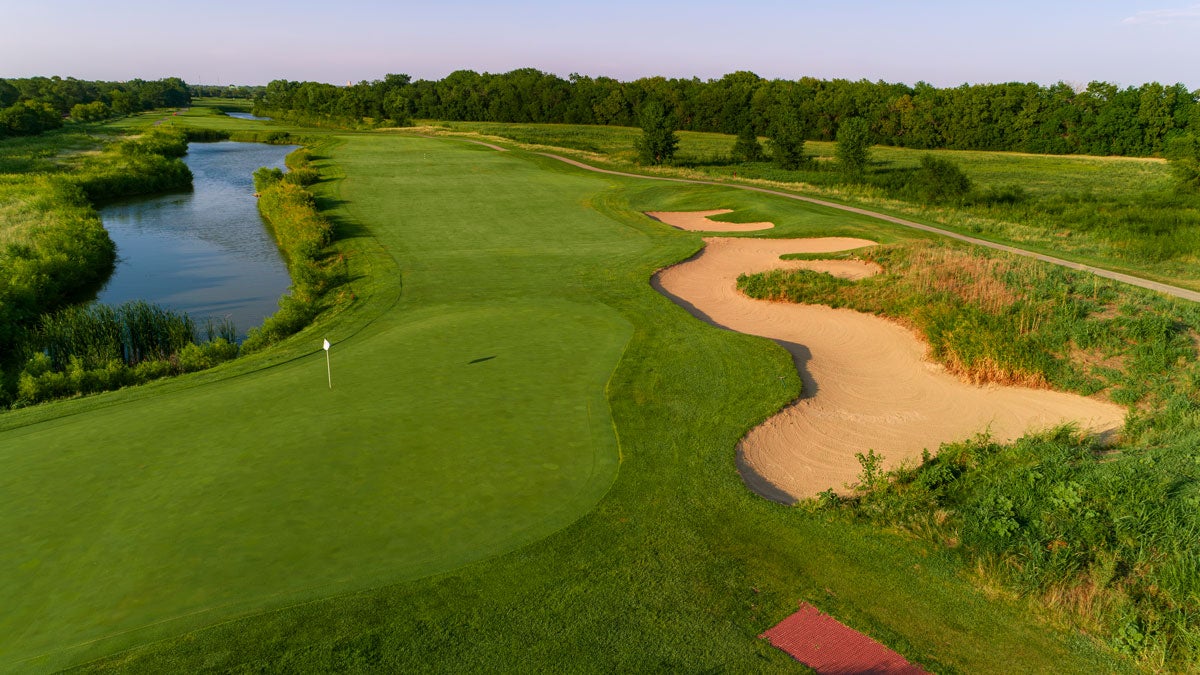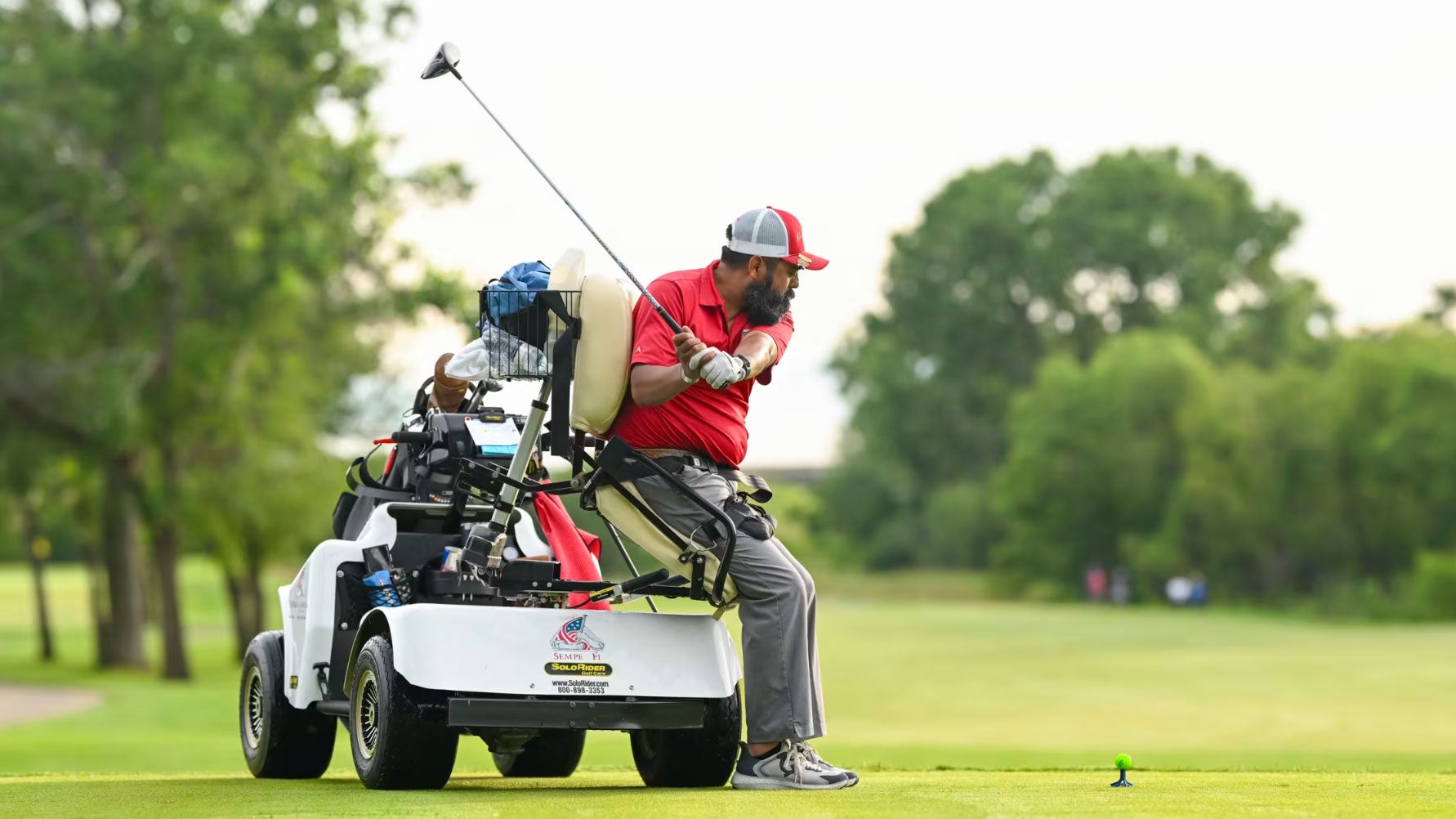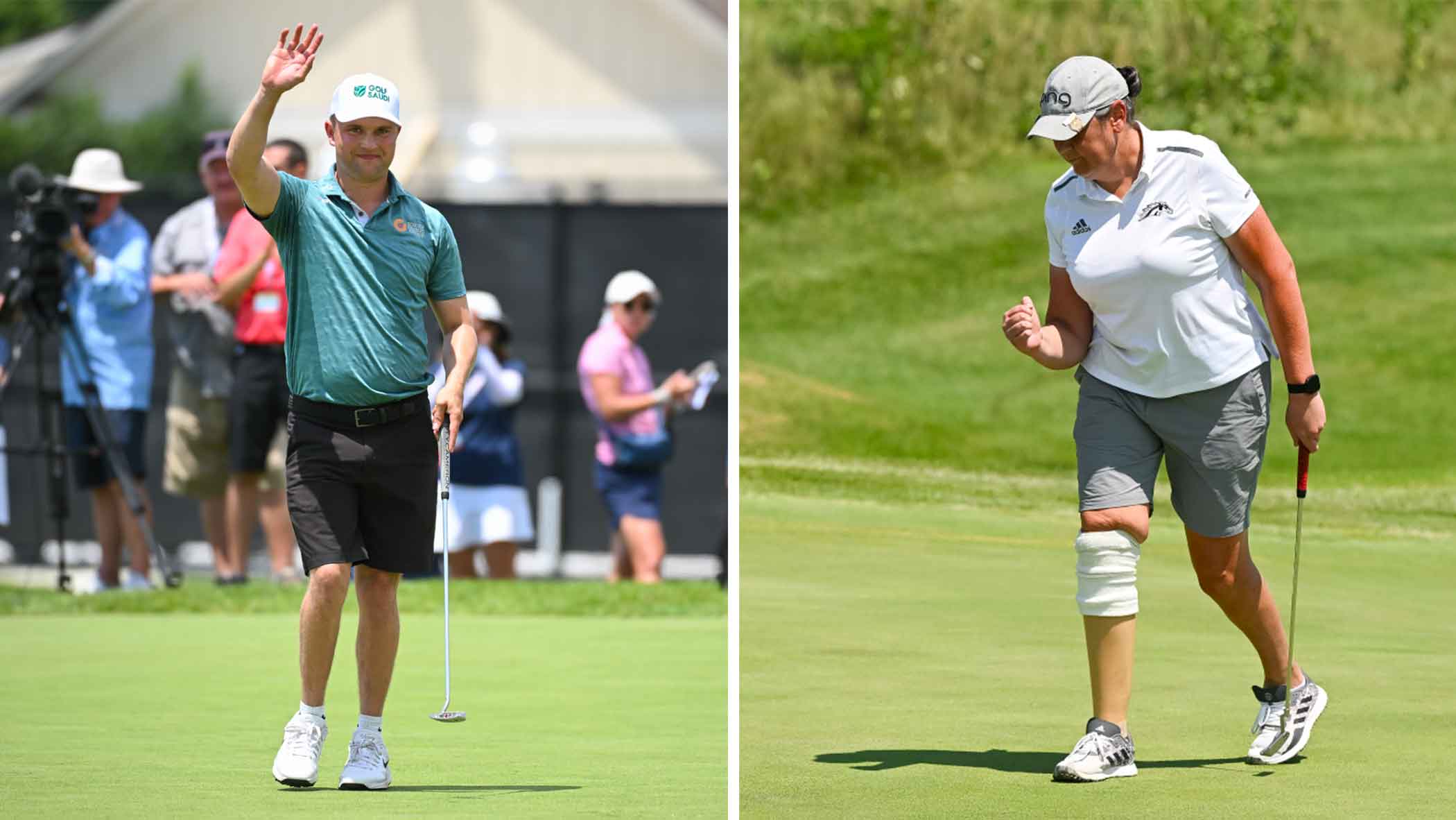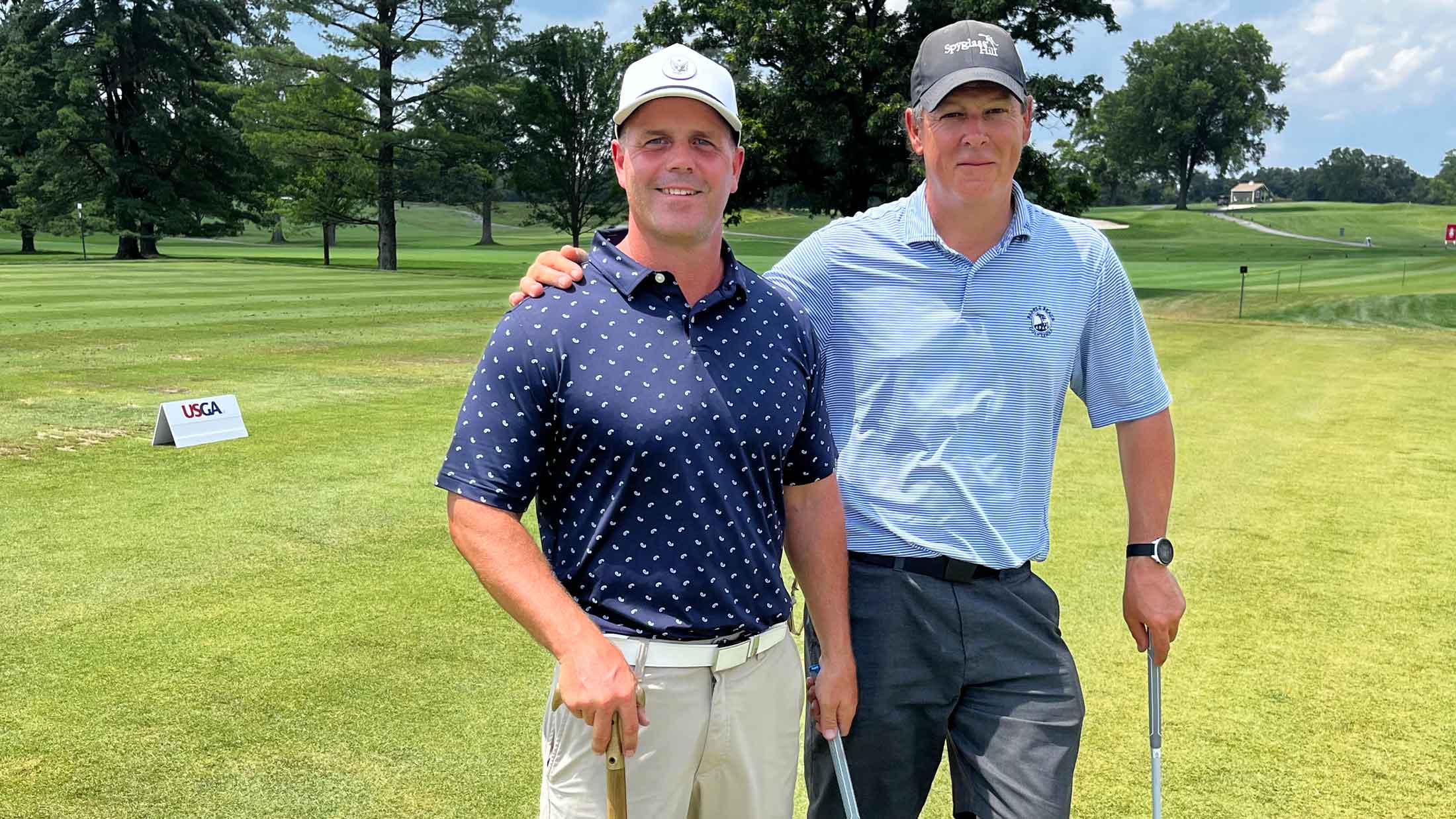It’s a busy week in big-time tournament golf: the stars of the women’s game are playing a major at the Evian Championship in France; the best male players will be tuning up for the Open Championship at the Scottish Open, at the Renaissance Club, in North Berwick; LIV Golf also is in session, at Valderrama, in southern Spain.
But there’s at least more championship this week that deserves your attention: the third playing of the U.S. Adaptive Open, which is being contested at Sand Creek Station in Newton, Kans., just north of Wichita. Here are 5 things you need to know.
What is the U.S. Adaptive Open?
Open to male and female golfers in eight impairment categories, the Adaptive Open — though still young — already has established itself as one of the most meaningful and inspirational tournaments on the global golf schedule. Ninety-six players are in the field this week, ranging from 15-year-old Ryder Barr (Upper Limb Impairment) to 78-year-old Bruce Hooper (Vision Impairment). The collection of players also has geographic diversity: 32 states are represented at Sand Creek, as are 11 different countries.
“This is a brand-new championship for the U.S. Golf Association,” Greg Sanfilippo, the USGA’s senior director of championships, told the Newton Kansan, “but this is a missing void for 50 to 75 years for the adaptive community.”
Ask Larry Celano, a 55-year-old who is competing this week in the Seated Players category.
“I’m amazed I get to come out and do something I love, that I got good at, and people get inspired,” Celano said Sunday. “I got hurt at 20 when I was in the military, in the Army, in Division Panama, and I never looked at myself as a hero or any of that, but since adaptive golf and the Adaptive Open, it’s just exploding, people coming up to me saying, ‘Larry, you’re amazing, you’re an inspiration.’
“That’s not why I’ve set out to do this. But if I can come out and play good golf and you get inspired, it’s a win-win.'”
What’s new this year?
A lot!
To begin with, the setting. The first two editions of the event were conducted at Pinehurst, meaning this is the first Adaptive Open to visit the Midwest. The host course, Sand Creek Station, is about 30 miles north of Wichita and was the site of the 2014 U.S. Amateur Public Links Championship. The Jeff Brauer design, which opened in 2006, winds its way through corn and alfalfa fields with an active train line separating the front and back nines.
Brendan Lawlor, a 32-year-old from Ireland who is ranked 3rd in the World Ranking for Golfers with Disability, thinks birdies could be for the taking.
“I think it’s going to be quite low scoring because there’s a lot of short holes,” he said after his Sunday practice round. “I’d say the course is quite short so you can get at it. I think people can go out and definitely shoot a number.”
Two other firsts for this year: (1) Most of the field qualified by way of one of six qualifying sites that met Americans with Disabilities Act requirements for accessibility, and (2) This week’s championship has a cut, which will come after 36 holes. Advancing to the final round on Wednesday will be the top-20 overall male players and ties and top three men and ties from each Impairment Category, and also the top 10 overall female players and ties and top two women and ties from each Impairment Category. (Any player within five strokes of the lead in their Impairment Category also will advance.)

The best storylines? Take your pick
In golf, we often celebrate (and report about) the select players in a given field who have overcome hardship and challenges for a shot at glory. But at the Adaptive Open those inspiring tales are literally in every group on the tee sheet. Throw a dart and you’ll hit one.
Take Alex Fourie, 31, a PGA professional from Murfreesboro, Tenn. Fourie was born in Ukraine with a cleft lip, cleft palate and one arm. As the USGA tells it, he was “adopted from a Ukrainian orphanage at age 7 by South African missionaries who were serving in Alabama, where he picked up the game just days after moving to his new home. Fourie now works in roof sales for a construction company and began fundraising to support Ukrainian orphans who have been displaced by Russian attacks.”
Or Kim Moore from Portage, Mich., who won the women’s overall champion at the inaugural U.S. Adaptive Open in 2022. Moore was born without a right foot, a severely clubbed left foot and a slight case of spina bifida. A former standout golfer at the University of Indianapolis, Moore today is a PGA teaching pro and also the head women’s golf coach at Western Michigan University.
Or Kenny Bontz from Parrish, Fla., who developed diabetes at a young age and, at 19, Ewing sarcoma in his leg. Bontz, who is now 54, had six knee replacements in nine years and eventually elected to have his leg amputated.
In the 96-player Adaptive Open field, there are 93 more remarkable stories just like these ones.
What are the impairment categories?
There are eight of them, which the USGA used to set the field, assign tees and award prizes: Intellectual Impairment; Lower Limb Impairment; Multiple Limb Amputee; Neurological Impairment; Seated Player; Short Stature; Upper Limb Impairment; Vision Impairment.

How can I follow the action?
Live scoring and more information is available via the USGA’s Adaptive Open hubpage. You can follow the men’s overall results here and the women’s overall results here. The first round is underway. The second round is on Tuesday, and the third and final round is on Wednesday.
Golf Channel’s “Golf Today” also will provide extended coverage and live reports of the Adaptive Open from 1-3 p.m. EDT on Monday, Tuesday and Wednesday, as will “Golf Central” from 5-6 p.m. EDT. On Wednesday, the Golf Central crew will cover the final 30 minutes of the final round, including the trophy ceremony.










